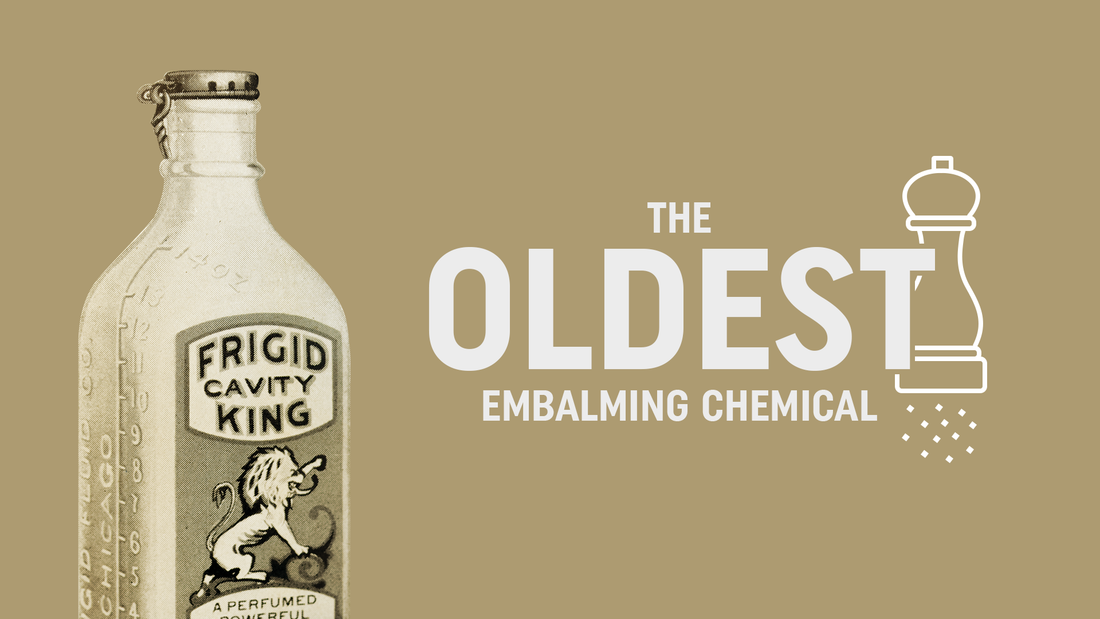Since ancient times, human civilizations have sought methods to preserve the bodies of the deceased as a means of honoring their memory and beliefs about the afterlife. Among the various techniques employed, salt has stood the test of time as the oldest and most enduring embalming chemical used by humans. Its preservative properties have played a pivotal role in shaping the rituals and traditions surrounding death throughout history.
Historical Significance of Salt in Embalming
The practice of purposeful preservation of the deceased dates back thousands of years, and perhaps the most well-known instance of this is ancient Egypt. The ancient Egyptians believed in an afterlife and sought to preserve the bodies of their deceased loved ones to ensure a smooth transition to the next world. Salt, in the form of natron, a naturally occurring mixture of sodium carbonate and sodium bicarbonate, played a central role in this process. The Egyptians meticulously removed internal organs and placed the body in natron for about 40 days. This process desiccated the body, preventing decomposition and allowing for a well-preserved corpse.
The Egyptians' embalming techniques were not limited to pharaohs and the elite. Even commoners benefited from these preservation rituals, though the complexity of the process varied according to the social status of the deceased. This emphasis on preservation highlighted the profound significance of the afterlife in ancient Egyptian culture, with salt as a key enabler of their beliefs.
Cultural Applications of Salt in Embalming
Beyond Egypt, salt-based embalming practices spread to various ancient cultures, each adapting and incorporating their unique traditions. In ancient China, for instance, a method called "boiling and drying" involved immersing the deceased in a solution of salt and other herbs, followed by desiccation in the sun. The Chinese believed this process allowed the soul to return to the body after death and continued to perform these rituals for centuries.
Similarly, in pre-Columbian South America, the Incas practiced mummification using salt and other natural substances. They preserved their deceased rulers and nobles by carefully drying the bodies and interring them in elaborate tombs. The use of salt in these cultures symbolized a deep reverence for the departed and a belief in the continuity of the soul's journey.
Scientific Principles of Salt in Embalming
The effectiveness of salt as an embalming chemical lies in its hygroscopic properties, meaning it has the ability to absorb and retain moisture. This characteristic is vital in the preservation process, as moisture is a primary catalyst for decomposition. When applied to a decedent, salt draws out moisture from the tissues, making the environment hostile to bacteria and microorganisms responsible for decomposition.
Moreover, salt acts as a natural desiccant, accelerating the drying process. As ancient civilizations discovered and refined their embalming techniques, they recognized salt's capacity to leave the body in a state of mummification, preserving it for an extended period.
Lasting Impact of Salt in Embalming
The use of salt in embalming not only influenced burial practices but also had broader impacts on ancient societies. The preservation of bodies enabled the construction of grand tombs and elaborate burial sites, which eventually evolved into iconic structures like the Egyptian pyramids. The cultural emphasis on preserving the deceased's body fostered artistic and architectural achievements that continue to captivate modern audiences.
Furthermore, the significance of salt in embalming permeated religious and philosophical beliefs about the afterlife. The concept of the soul's journey and the preservation of the physical form became intertwined across cultures. These beliefs continue to influence funeral practices and memorial ceremonies around the world, shaping how people cope with death and mourn the loss of loved ones.
While modern embalming techniques have evolved significantly, the legacy of salt in preserving bodies continues to resonate. Contemporary embalming fluids and techniques still make use of salt. A popular technique embalmers use for bodies with edema (a body water content 10% above normal) is to mix strained Epsom salts in their embalming solution. Some embalmers do this with caution as it can dry out the gaskets in their embalming machine. However, the design of the Frigid Embalming Machine (SKU: 3-EMB03) facilitates this technique as it has apertures (passageways) that open and close rather than gaskets. Further, salt is often a component for edema fluids such as Leak Guard (SKU: 1-LEAKG), and cavity fluids such as Pharos (SKU: 1-PHAROS), Premium Cavity (SKU: 1-PREMCAV), Cavity King (1-CAVKING), and 5 Purpose Cavity (1-5PUR). The next time you find yourself with a body with too much water in it, do something that humans have been doing for centuries and use some salt!


